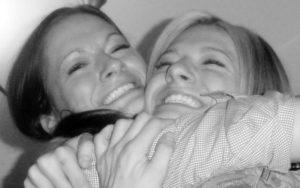Above and Beyond Nature versus Nurture
 Every so often, stories about twins separated from birth who are reunited with their sister or brother make sensational headlines. While the circumstances vary as to how they find one another, the particular details are exciting, heartwarming, and in some cases astounding. Hearing about how families make sacrifices to enable the separated siblings to see one another in order to have an ongoing connection is a testimony to their commitment to the twin bond.
Every so often, stories about twins separated from birth who are reunited with their sister or brother make sensational headlines. While the circumstances vary as to how they find one another, the particular details are exciting, heartwarming, and in some cases astounding. Hearing about how families make sacrifices to enable the separated siblings to see one another in order to have an ongoing connection is a testimony to their commitment to the twin bond.
Inevitably, one person or another comments that seeing the twins together cements his or her thinking about the dominance of nature over nurture. Witnessing the children’s overwhelming physical and temperamental similarities seems to defy the imagination. The families are asked to fill out questionnaires and answer specific questions to generate scientific data about the specificity of the genetic dominance.
While I applaud the important findings of genetic research, as a psychotherapist I want to weigh in about my misgivings about conceptualizing developmental thinking in terms of nature versus nurture. The following quote comes from “Doing Contemporary Psychoanalysis” by Dr. Estelle Shane, a prominent psychoanalyst who has written extensively about the perspectives of practitioners who embrace tenets of contemporary psychoanalysis. She writes:
A contemporary analyst would more likely accept at face value that patient’s actual lived experience, focusing instead on exploring the meaning and ongoing influence of that presumed experience on other intimate relationships throughout her life. So unconscious content and processes, yes; unconscious, predictable, universal, self-contained and genetically determined content and processes, no. All experience is uniquely and inextricably created within and derived from the context in which the individual is embedded from the womb on. To put it simply, there is no baby without the mother and no experience without the context within which it is derived. This manner of thinking transcends the nature versus nurture dichotomy, moving to the understanding that very little can be conceptualized as a product of inherent genetic design.
Again, what we learn from neurobiology, from existential philosophy, and from nonlinear dynamic systems theory, is that assumptions of such cause-and-effect linearity do not obtain in human psychic life. Contemporary psychoanalysis leaves room, both in the individual mind and in the patient-analyst system, for the emergence of the random, the non-ordered, the unexpected, and the unpredictable; it is such nonlinearity that characterizes our current vision of life. Contemporary psychoanalysis leaves room, as well, for the new and the surprising that is often encountered in our clinical work, particularly that part of our work that seems to bode especially well for the patient’s progression.
So, while it is understandable how people can become awestruck by the uncanny similarities of the reunited twins, we must not lose sight of the fact that simply understanding human behavior within a narrowly defined “cause and effect” basis does not allow for a deeper grasp of emotional growth, differentiation, and individuality.
Photo by Anthony Topper CC by 2.0

